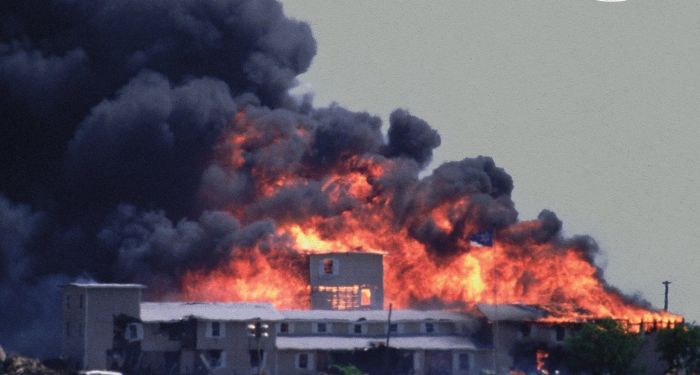On April 19, 1993, dozens of people, including many children, died in an FBI and ATF siege in Waco, Texas. I was just about to turn 4 when the Waco siege ended, so it’s safe to say that I was not following the news. When I was growing up, “Waco” seemed to be used as a cultural shorthand for any volatile situation that had the potential to end very, very badly. It showed up in popular humor with all of the sensitivity of the 1990s in jokes mostly centered around the fire and not the fact that actual humans, both Davidians and ATF and FBI personnel, died there. Waco is now probably better known for Chip and Joanna Gaines’s Magnolia empire at The Silos.
What Happened at Waco?
The standoff at Waco took place between February 28 and April 19, 1993. The Branch Davidians, an offshoot group of the Seventh Day Adventist church, were living on a compound known as Mount Carmel and were suspected of stockpiling of illegal weapons. The group’s leader, David Koresh, had also been sexually abusing preteen girls, calling them his “wives.” There were other allegations of child abuse within the compound as well.
Negotiation with Koresh and other members of the group dragged on for months and there was a 51-day siege. Communications broke down and, eventually, the FBI moved in and filled the compound with tear gas. The structure was quickly engulfed in flames and 76 Branch Davidians died, including 25 children and David Koresh. There is still debate on what exactly happened that day, who started the fire, and the government’s overall role in the siege. To what extent was the world misled about what was going on within the compound?
Waco and an earlier siege at Ruby Ridge in Idaho fueled the fire of the sovereign citizen movement, and both events were cited as inspiration by Timothy McVeigh, the Oklahoma City bomber. It is very clear that what happened at Waco didn’t end at Waco. Today there is a Branch Davidian church at the site of the siege, though they don’t claim association with Koresh.
I tried to focus this list on books published in the last 20 years since more information has come out since the initial round of books about Waco. The full Waco report was not available until 2000. While there were people of color within the compound, the diversity of authors writing about Waco is frankly lacking. You can find more diverse perspectives in podcasts (though not about Waco, I really loved Glynn Washington’s podcast about Heaven’s Gate) and TikTok (though remember what I said about the militia content — thehistory_hub, youcancallmepatches, and trustmecultpodcast are all interesting TikTok accounts that discuss cults). One Black British survivor of the cult, Livingstone Fagan, has written several books on his continuing analysis of Branch Davidian theology. There were only nine survivors of the fire that ended the standoff. Many of the women who were there that day died with the children. Several of the books on this list were written in collaboration with federal law enforcement, and women have traditionally been underrepresented in both the FBI and ATF.
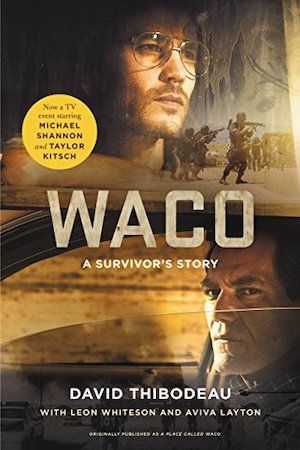
Waco: A Survivor’s Story by David Thibodeau and Leon Whiteson
David Thibodeau was at Mount Carmel on the day of the raid and survived. His book talks about day-to-day life within the compound and what he believes happened on the day of the raid. He also updates the reader on the lives of other survivors. This book was one of the works that inspired the Netflix series, Waco.
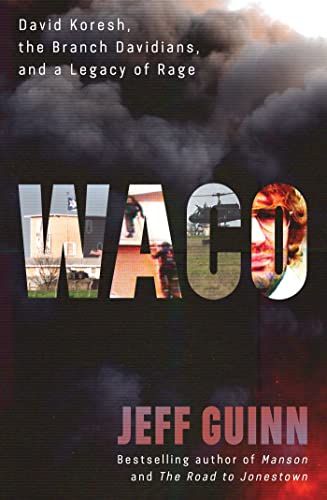
Waco: David Koresh, the Branch Davidians, and a Legacy of Rage by Jeff Guinn
Jeff Guinn, who has written about Charles Manson and Jim Jones, writes about the siege from the perspective of the ATF agents who took part in the initial assault. More than a dozen former ATF agents were interviewed about the difficult choices that led to the final confrontation at Waco. He traces the path between the siege and the modern militia movement in America.
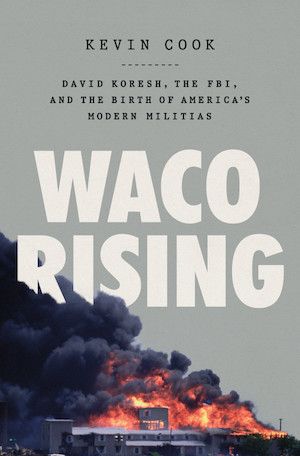
Waco Rising: David Koresh, the FBI, and the Birth of America’s Modern Militias by Kevin Cook
No historical event exists in a vacuum: if you’re interested in how the legacy of Waco is reflected in American militia movements, this book is a great primer on the subject. It tells the story of how David Koresh came to be the leader of the movement, what happened to many of the survivors, and it does not end at the siege. I really needed to tell my friends everything I’d learned after I finished this book. They were concerned.
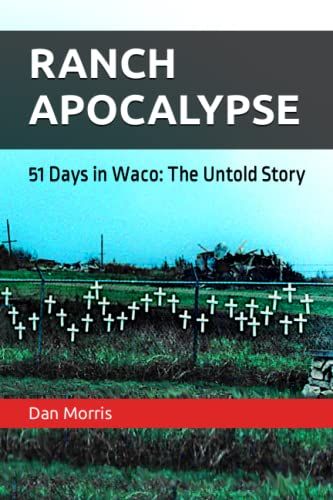
Ranch Apocalypse: 51 Days in Waco: The Untold Story by Dan Morris
Morris was an ATF agent assigned to the Branch Davidian case. The book attempts to be an objective account of what happened at Mount Carmel with Morris taking time to interview his fellow agents and some survivors of the raid. Morris had access to a lot of firsthand information and attempts to dispel some of the myths that have come to surround what happened on April 19, 1993.
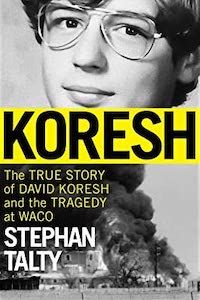
Koresh: The True Story of David Koresh and the Tragedy at Waco by Stephan Talty (April 11)
It seems as though less has been written about David Koresh than other cult leaders. This biography traces his path from an isolated childhood as Vernon Wayne Howell to his time as the leader of the Branch Davidians. It contextualizes how Koresh’s particular obsessions — with firearms, with sex — helped lead to the eventual siege.

A Journey to Waco: Autobiography of a Branch Davidian by Clive Doyle and Catherine Wessinger
Survivor Clive Doyle recounts the day of the siege at Mount Carmel and how he came to join the Branch Davidians. He also writes about what came after the raid. This book was written about ten years ago, but the in-depth detail about the Davidians beliefs isn’t outdated.
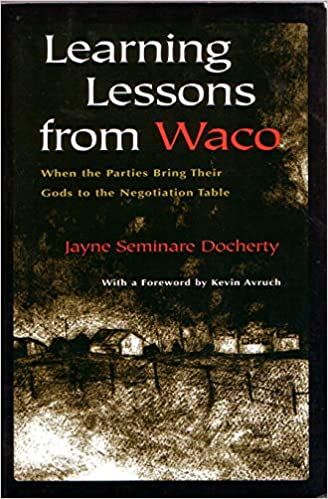
Learning Lessons from Waco: When Parties Bring their Gods to the Negotiation Table by Jayne Seminare Docherty
This book explores why 51 days of negotiation failed to bring an end to the standoff at Mount Carmel. This more academic text analyzes law enforcement transcripts to explain why the two parties distinct world views made it impossible to reach agreement. It also proposes a new way forward for negotiations with insular religious groups.
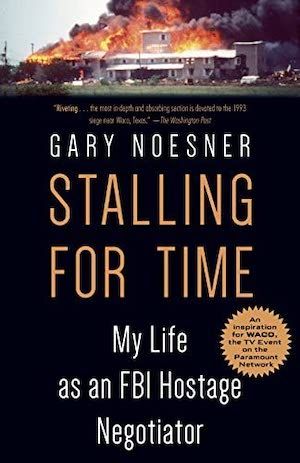
Stalling for Time: My Life as an FBI Hostage Negotiator by Gary Noesner
Noesner takes the reader through of the most famous hostage negotiations in FBI history. This book also inspired the Netflix miniseries Waco. This is an interesting read as it places Waco in the context of other events, including the D.C. sniper attacks of 2002.
In stories like those of the Branch Davidians, it can sometimes be difficult to remember that the people involved were real people — reading their stories brings that home. If you’re interested in learning more about other cults, check out our list of 32 Fascinating Books About Cults. If you’re just wondering why people are so interested in this stuff, check out this essay about our enduring fascination with cults.
